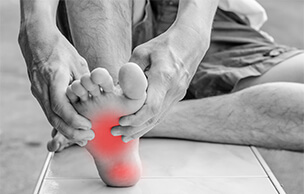
We’ve all lost our balance ‘ slipping on ice, getting knocked down in a sport, tripping over a toy, or perhaps from feeling dizzy. But sometimes body imbalance is less obvious, lurking inside while we move freely about, and the causes may indicate long-term problems if left unresolved.
It’s been estimated that over 30 million Americans have some type of balance disorder. There are various ways to test for it, and Dr. Victor Romano, an orthopedist, says doing so increases the chances of finding the source of the problem and determining non-surgical solutions.
‘When your body is out of balance, you will begin to experience a myriad of problems,’ says Romano (www.romanomd.com), author of Finding The Source: Maximizing Your Results ‘ With and Without Orthopaedic Surgery. ‘A loss of balance indicates something is wrong internally. It’s a clue to look further.’
Dr. Romano, who uses a type of balance and reflex testing called Autonomic Motor Nerve Reflex Testing (AMNRT), breaks down what a loss of balance can mean in relation to the health of the body’s neuromuscular systems:
The peripheral nervous system. This includes the nerves to the hands, feet, elbows, ribs, jaw and pelvis. ‘If your peripheral nervous system is off, then your balance will be off when you close your eyes or look at a dark color,’ Dr. Romano says. ‘Patients are usually amazed when I’m able to push them off-balance.’
Once when he was a football team physician and administered balance testing, Dr. Romano was able to knock players much bigger than himself off-balance.
The central nervous system. This involves the nerves to the neck and back. Dr. Romano checks patients’ balance first with their eyes open, then closed, to test the integrity of their peripheral nervous system. Then he tests their central nervous system by checking their balance using some head movements. ‘If you lose your balance when you turn your head to the left or right, or when you nod your head up and down, then your central nervous system is off,’ he says. ‘There’s a problem with either the neck, upper or lower back, or sacroiliac joint, near the base of your spine. Usually, they hadn’t previously thought they had any weakness.’
Pelvic alignment. If your pelvis is out of alignment or ’tilted,’ Dr. Romano says that means one side of your body will be weaker than the other. ‘All functional movement begins at the core,’ he says. ‘Weaknesses of the core predispose someone to injuries in other areas of the body. The core muscles align the spine, ribs and pelvis, stabilizing the body. But while people with a pelvic tilt often go about their day normally, it leads to side-to-side instability.’
‘Finding the source of a problem and of pain can help cure it using non-surgical means,’ Dr. Romano says. ‘Often it starts with something as simple as testing your balance.’



















